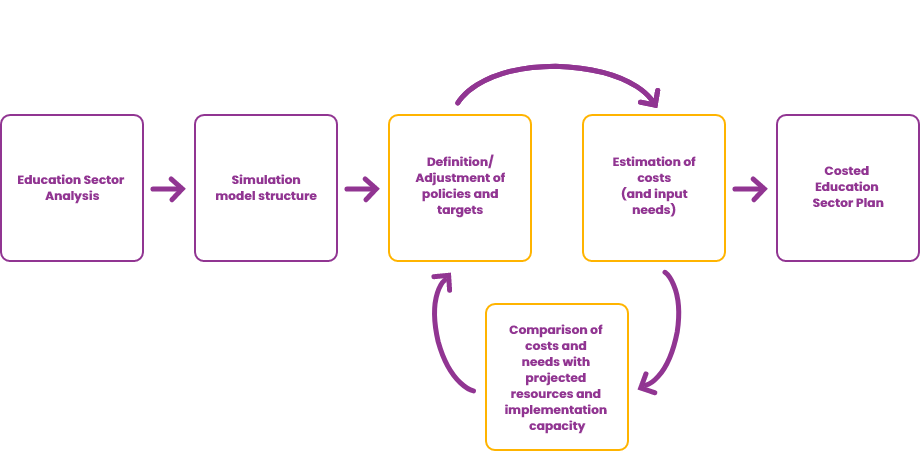
© GPE/Carine Durand
Introduction
An important step for policy design is the development of a simulation model. Such a model then informs decision making for the development of the policies. Types of ECE simulation models are described and illustrated in this tool. Tips for ECE stakeholders to engage with costers and planners who develop models are provided in this tool.
Objectives
Using this tool will enable ECE Technical Working Group (TWG) stakeholders to:
Understand the purpose of simulation models
Understand two main types of projections (needs-based projections and intervention-based projections)
Examine two ECE-related projection model examples, one of each type, and understand how these were developed and used in two different country contexts (Sao Tome e Principe and Lesotho)
Understand how to communicate key aspects of the ECE subsector with finance and planning stakeholders (i.e. costers and planners)
And understand how to make adjustments to ESP’s ECE components (i.e. targets and associated costs) post simulation
Understand the use the simulation in their country contexts to test the impact of various policy options and explore their relative feasibility, scalability, and sustainability
When to Use this Tool
In the Education Sector Planning (ESP) cycle, simulation models are typically developed after the Education Sector Analysis (ESA) when determining policy priorities.
- Simulation models are helpful in “testing” the impact of various policy options to explore their relative feasibility, scalability, and sustainability.
- Simulation models will support the “iterative process” – or repetitive process - of adjusting proposed priorities, strategies, activities, targets and the aforementioned costs for including these components in the ESP.
- Apart from the ESP cycle, simulation models may be used to assess the financial feasibility, capacity requirements, and expected impact of a new envisaged ECE policy.
Key Information
The purpose of the simulation model is to project various aspects of the education sector and its costs over the period of the next Education Sector Plan (ESP), to ensure the financial sustainability and physical or operational feasibility of the envisaged policies.

Essentially, you are trying to simulate or “generate” possible scenarios using available data. Note that in contexts with decentralized governance arrangements, additional data sources may need to be considered to inform simulation models.
A simulation model is not a fixed document, but rather a tool used to test the impact of various policy options.
Once the model structure is developed, parameters can be adjusted to reflect different policy options or targets and observe their impact on the total cost, financing gap, and needs for new teachers, classrooms, etc.
Simulation models help costers and planners identify scenarios or options within the ECE subsector. ECE stakeholders will work with costers and planners to provide subsector data needed to build models. ECE stakeholders will work with costers and planners to adjust options and targets to ensure they are aligned with the priorities envisaged. The models will be useful to inform decision-making to prioritize interventions with the funding available and set realistic targets.
Essentially, the projections can be of two types, which we can call need-based and intervention-based.